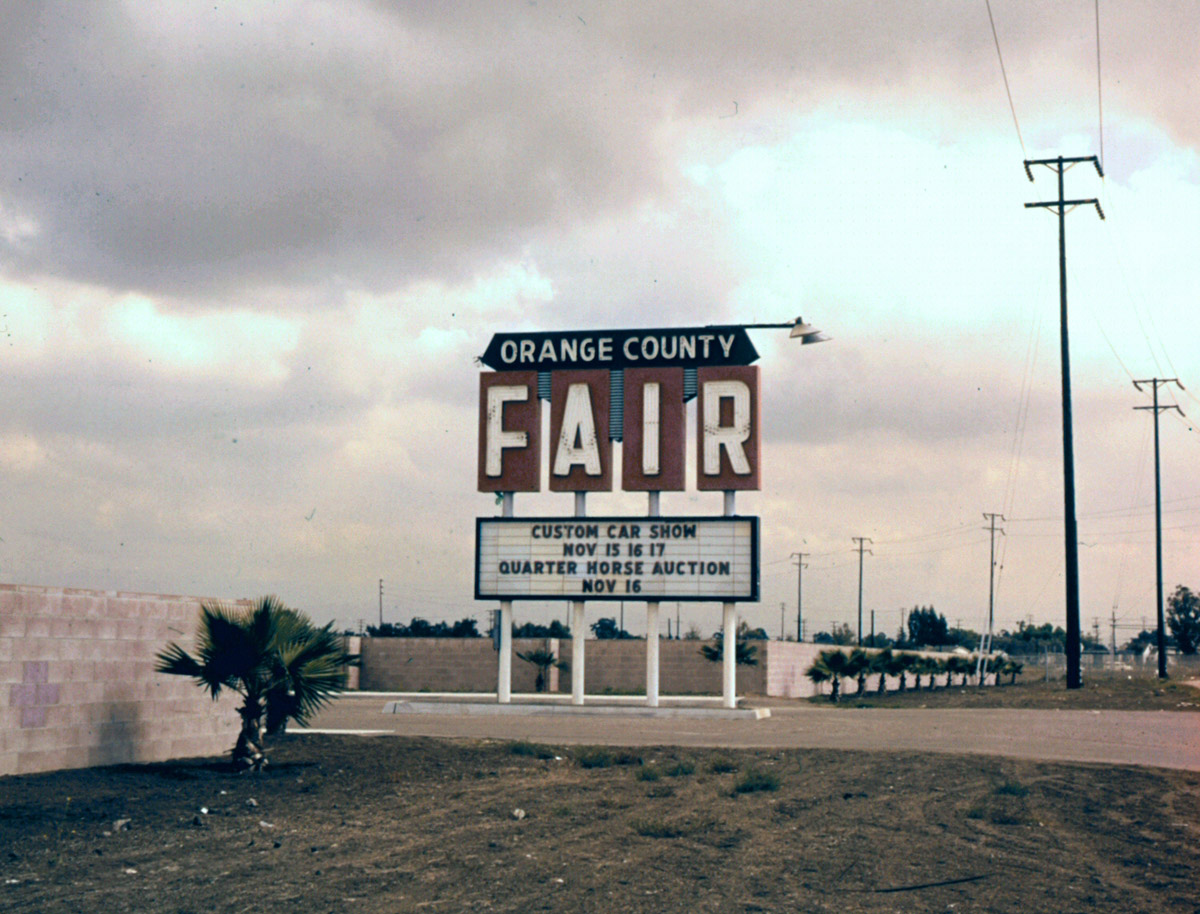
There’s a line in the sands of time by which one can measure Orange County history; on one side is B.D. (Before Disneyland opened on July 17, 1955), and the other, A.D. (After Disney). If you’ll allow the use of a gross generalization, pretty much everything that occured A.D. can be tied back to Mouse Heim in some way. And anything that occured B.D.—that is, before a Hollywood cartoonist built his dreamland on what was then 160 acres of Anaheim citrus farm (more on that later)—can be traced back to farming.
So using that logic, farming history is our history. And as much as Orange County has changed over the years, the Orange County Fair (or OC Fair, which opens Friday and runs through Aug. 12) has been there from the beginning.
The first fair committee was founded on the heels of Orange County’s incorporation; both were born in 1889. As the county grew, so did the county fair. From its modest beginnings as a three-day agrarian festival in 1890 at the Santa Ana Racetrack to the month-long smorgasbord it has evolved into, the OC Fair has reminded us of our farming roots, which are as deep as a Valencia orange tree, and allows us to “free our inner farmer,” no matter how much pavement we pour on the rich farmlands that once stood.
So without further fanfare, let’s take a look at some formative moments that helped define the history of the Land of Citrus with more ups and downs than a runaway Ferris wheel.
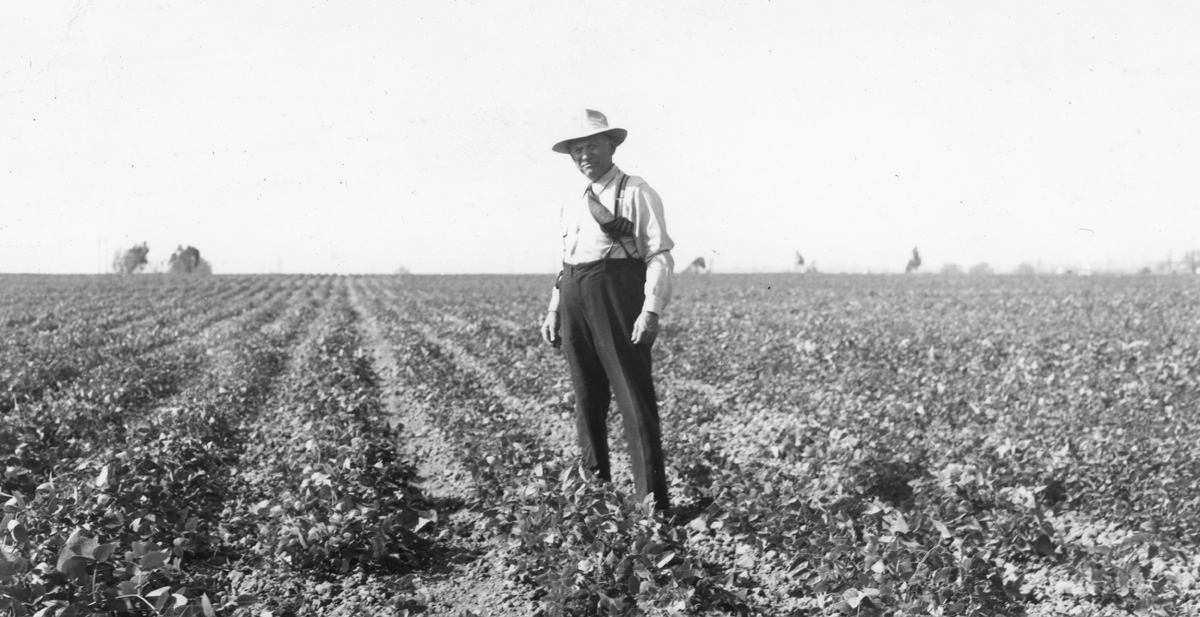
March 20, 1852
Sepulveda Bets the Farm
What’s better than horse racing or gambling? Horse racing and gambling. And Jose Antonio Andres Sepulveda, the eccentric owner of Rancho San Joaquin, loved both. In the historic rancho’s heyday (when it spanned what is present-day Newport and Laguna beaches), cattle-raising was California’s chief industry, and San Joaquin was the largest cattle ranch in the infant state. (Orange County was not even an idea at this point, California having become a state just two years earlier.)
Sepulveda had a reputation for being somewhat of a dandy; renowned for his lavish and expensive tastes in clothing, he would probably be pleased to know a temple to garish and overpriced clothing now sits on land he once owned. His tastes were extravagant in many of his life’s passions; hospitality and horse racing were no exception to this excess. When Sepulveda got wind of an epic Australian racehorse named Black Swan, he bought the mare, sight unseen, and had her shipped overseas. He debuted his new celebrity horse by challenging Mexican presidente Pio Pico’s undefeated Sarco to “California’s Greatest Horse Race to date,” according to a Los Angeles Times retelling.
Folks reportedly traveled from as far as San Diego and San Luis Obispo to witness the 9-mile spectacle that took off from what is now Seventh and Alameda in Los Angeles to lay down indulgent bets on the outcome. Sepulveda’s wife, Francesca, is said to have passed out $50 gold coins to servants so they could join in on the betting frenzy.
In an upset victory, Black Swan emerged triumphant, and the Sepulvedas added their newly won bounty of gold to their stockpile of wealth. Less than a year later, Black Swan stepped on a nail and died of lockjaw. So it goes.
The great drought of 1863 to 1864 hit Sepulveda in the fields and in his once-overflowing well of fortune. Losses from the drought and gambling led to insurmountable debt for the rancho royalty. He was forced to sell his grand Rancho San Joaquin in 1864 to four pioneer businessmen: Thomas and Benjamin Flint, their cousin Llewellyn Bixby, and a silent partner named James Irvine.
Sepulveda’s cattle ranch eventually became the Irvine Family Ranch, which started as a sheep-farming industry that later sparked a family dynasty. From this farming fortune came the Great Park; Orange County’s sole University of California location; and, of course, the county’s master-master-planned community, the city of Irvine.
The name of Sepulveda’s noble rancho has been immortalized as a golf course in Irvine. Interestingly enough, when builders began work on the foundation for the golf course, remains of adobe buildings from the original rancho were unearthed. Sepulveda had the last laugh.
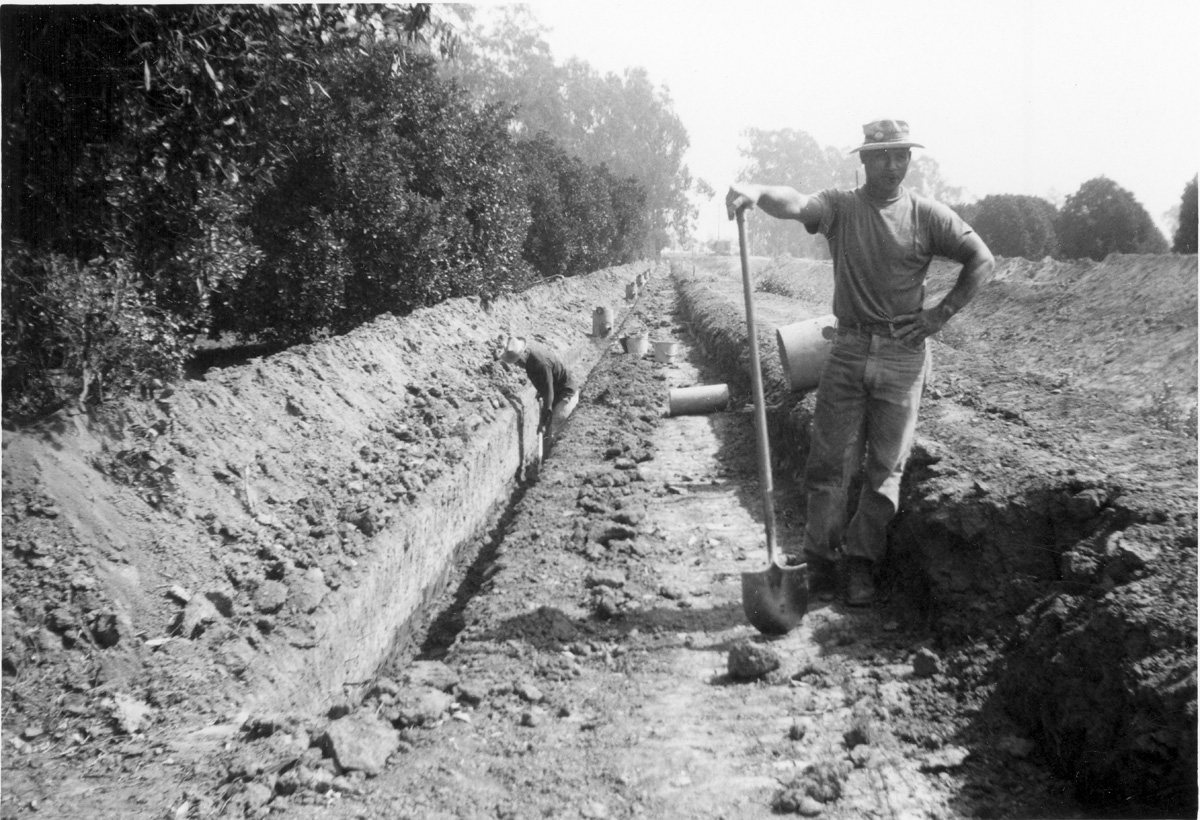
Sept. 13, 1859
GERMANS ARRIVE IN ANAHEIM, IMMEDIATELY FIND A WAY TO GET DRUNK AND CONQUER
The German people are particularly proficient at making fine alcoholic beverages and master-planning (although real Germans will tell you they’re technically proficient at everything they do). When the German immigrants who founded “Annaheim” in 1857 actually arrived in Southern California two years later, the efficient bastards did just that. Making quick work to clear out what was Rancho San Juan Cajon de Santa Ana, the colonists almost immediately began making wine. The pioneers had spent the past two years master-planning their grand vision for what would later be known as “The Mother Colony” of Orange County, a fact that would likely please the proud Deutschlanders.
This would begin a long trend of breaking up rancho land into smaller Anglo settlements; Santa Ana, Tustin, Westminster, Orange and Garden Grove would all be birthed in this first wave of Rancho reduction. The vineyard venture would prove a perilous endeavor, however. Mother Nature’s infinite irony plagued the vineyards with both drought and floods, but Mother Nature is no deterrent for the will of a Deutscher Mensch. Los Angeles Vineyard Society president George Hansen took a page out of the Good Book and turned water into wine.
The first irrigation system in the area was created to water the grapevines, meticulously designed with the precision that’s a hallmark of German engineering. The laborious work of digging from the Santa Ana River to the vineyard was tasked to 50 Native American laborers, and the 450 miles of irrigation ditches was done by indigenous workers and, later, Chinese immigrants.
The 1880s spilled the wine, as it were, when a mysterious disease spread through the vineyards and decimated the precious crop. Mother Nature eventually outsmarted the Mother Colony.
Though Napa may be known as the big cheese of California wine production today, Anaheim was the greatest wine region of California for 25 years. Ironically, Anaheim’s largest export today, the Disneyland Resort (also masterminded by a German-American), celebrates the state’s wine production at its California Adventure theme park and the Grand Californian hotel, but the nods are to the central valley’s wine contributions, not that of its hometown. Admittedly, “Anaheim Rose” just doesn’t have quite the same ring to it. . . .
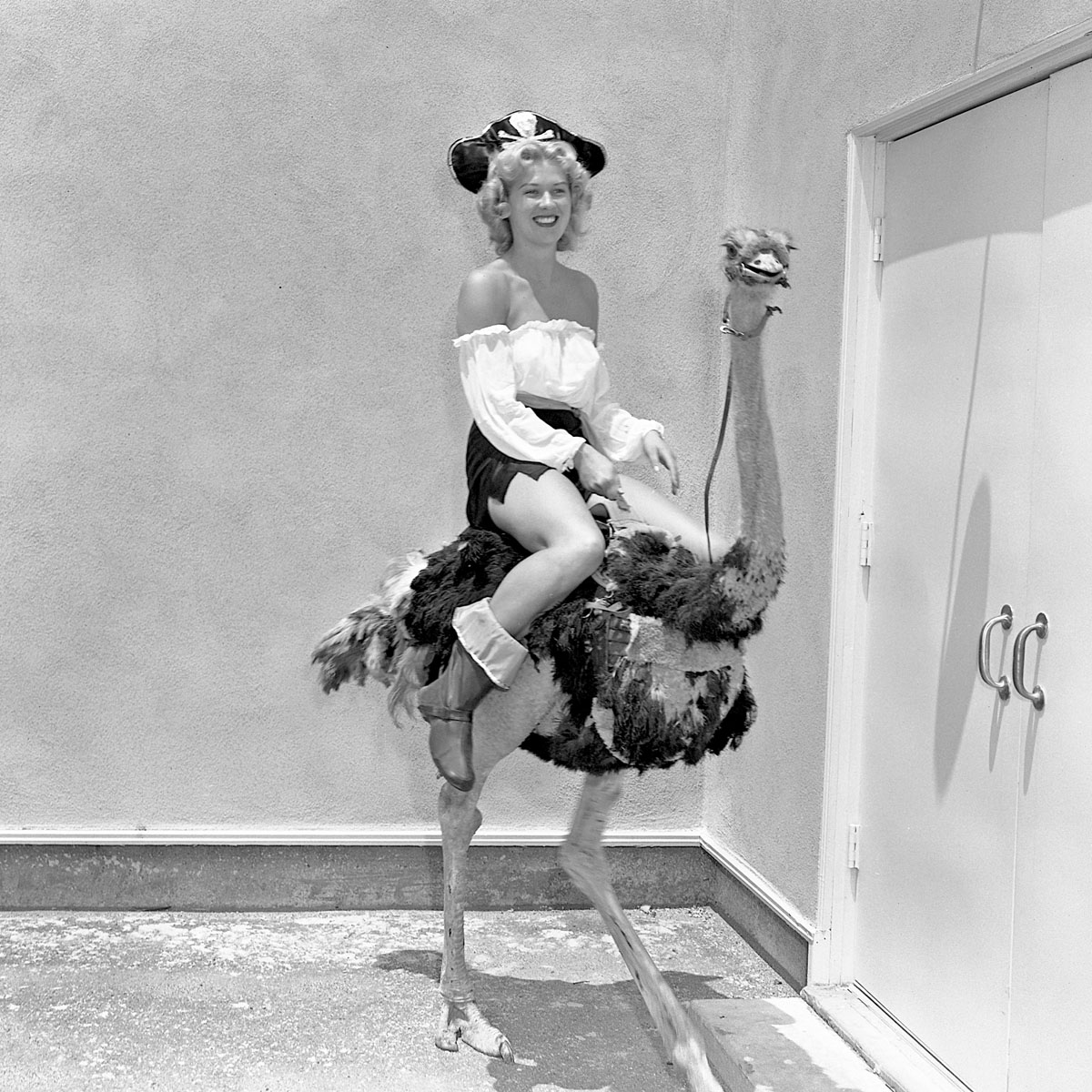
March 22, 1883
THE U.S. OSTRICH FARMING INDUSTRY HATCHES
The platform of the Costa Station in Anaheim on the Southern Pacific Railway must have been quite the sight to behold the day the 21 (or 22, reports vary) ostriches arrived to start their new life as livestock in Anaheim. Which is better than the alternative deadstock, which is the fate that befell almost 200 of the initial birds that were shipped out from an ostrich farm in South Africa. The majority of the surviving birds eventually made their way to Anaheim in 1883.
“It is probable that these 21 birds are the finest ostriches the present generation will look upon,” heralded the Anaheim Gazette in 1883. “They were selected from among a large number with especial reference to their size and quality because this was to be the initial experiment of ostrich farming in the United States, and those interested could not afford to invite failure by bringing over mediocre birds.”
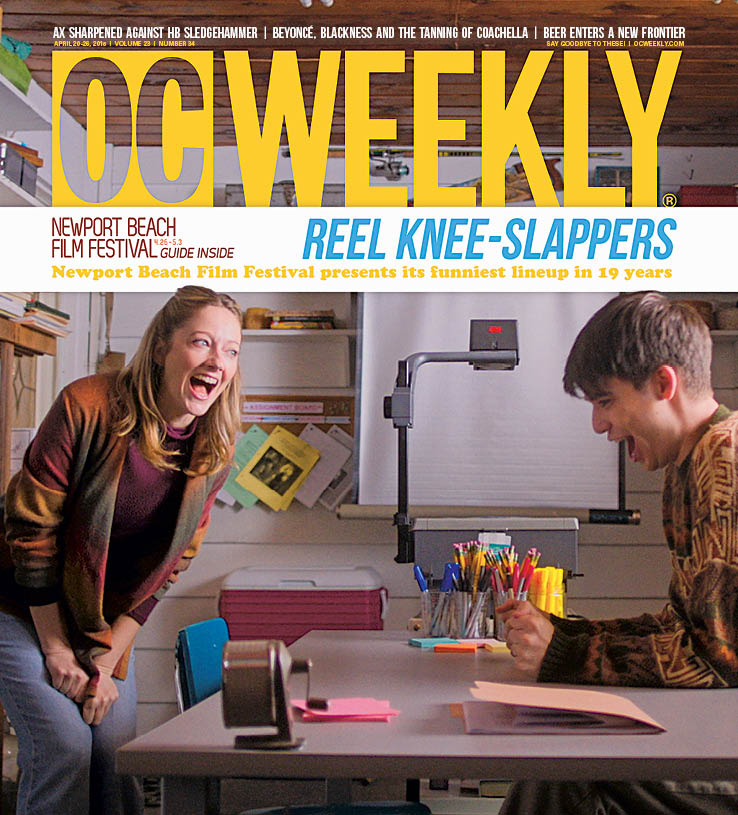
Ostrich plumes were at the height of fashion for ladies’ hats in the day, and the large, luxurious feathers were worth more than their weight in gold when the first birds were brought to Anaheim, later dubbed the “Ostrich Capital of the Nation.” The exotic animals caused quite a spectacle, for most residents at the time had never seen an ostrich in person. The first farm drew spectators from all over the southland, craning their necks to get a glimpse of the bizarre birds. So the farmers got the bright idea to start charging admission to gawk and gander.
Ostrich farming later sprung up across several farms in the area, including Placentia, La Habra, Long Beach and San Juan Capistrano. The ostrich industry in Orange County eventually led to ostrich racing, the first such races taking place at the Santa Ana Racetrack in 1896. The novelty spectator sport took off, and in 1951, the OC Fair would feature its first ostrich race.
March 11, 1889
ORANGE COUNTY INCORPORATES
The county finally gained its sovereignty and broke free from the shadow of Los Angeles County in 1889. Just kidding. Orange County still gets called LA all the time—just ask the Los Angeles Angels of Anaheim. And while the uninitiated aren’t technically wrong—what’s now Orange County was once Los Angeles County—they’re just 129 years behind.
But in 1889, the southernmost parcels of Los Angeles County, made up of mostly farmers and ranchers, declared their independence officially and named the new county Orange, forever associating the county and cities within as the Land of Citrus. Ironically, no commercial orange groves operate in the area today.
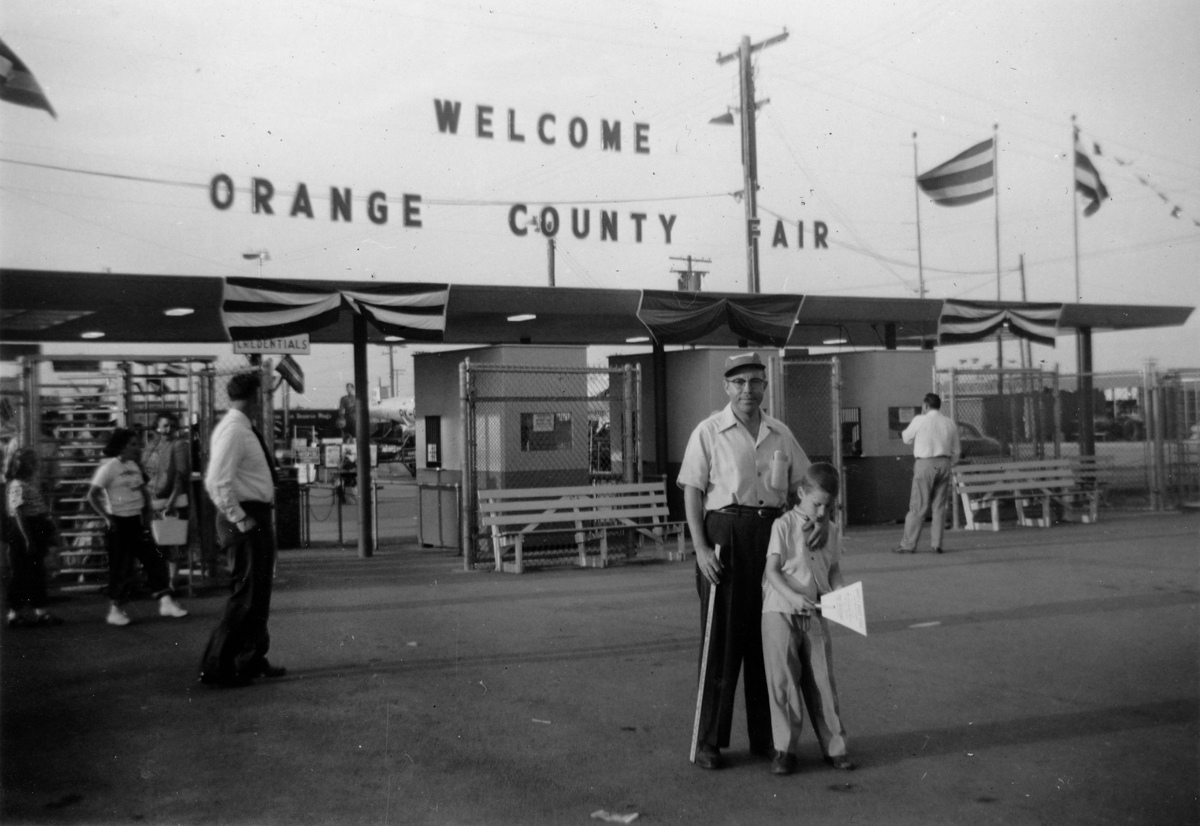
Oct. 7, 1890
FIRST FAIR HELD IN ORANGE COUNTY
The county’s first fair was held in the harvest season. The three-day event, put on by the Orange County Community Fair Corporation, took place at the Santa Ana Racetrack, located at the corner of Bristol and Edinger. Details of this initial fair are scarce, but it did include a horse race and a few agricultural exhibits. The relatively small affair picked up in 1892, when famed racehorse Silkwood raced on the Santa Ana track and won a $1,500 purse. Silkwood remained a star of the early days of the fair, helping to boost attendance.
September 1907
ETHEL CHAPMAN NAMED FIRST CARNIVAL QUEEN
C.C. Chapman, dubbed “the Orange King of California,” was agricultural royalty in Orange County thanks to the fortune he made growing his Old Mission Brand oranges. His daughter, Ethel, was naturally given the distinction of Carnival Queen at the county fair in Anaheim (located at Clementine and Cyprus Streets) in 1907. Not since a pre-Marilyn Monroe-persona Norma Jean Mortenson was crowned the first Artichoke Queen of Castroville in 1948 has such an agricultural achievement been bestowed upon a beautiful young woman in California. This initial crowning would start a tradition that would continue on at the OC Fair through 1983.
1924
THE ASARI GOLDFISH HATCHERY OPENS
Tsurumatsu “T.M.” Asari was the first documented Japanese immigrant in Wintersburg, California (that’s Huntington Beach to you, bruh). Asari was already a successful sugar beet and alfalfa farmer and merchant by the time he tried his hand at goldfish farming at 8741 Wintersburg Ave. (now Warner Avenue).
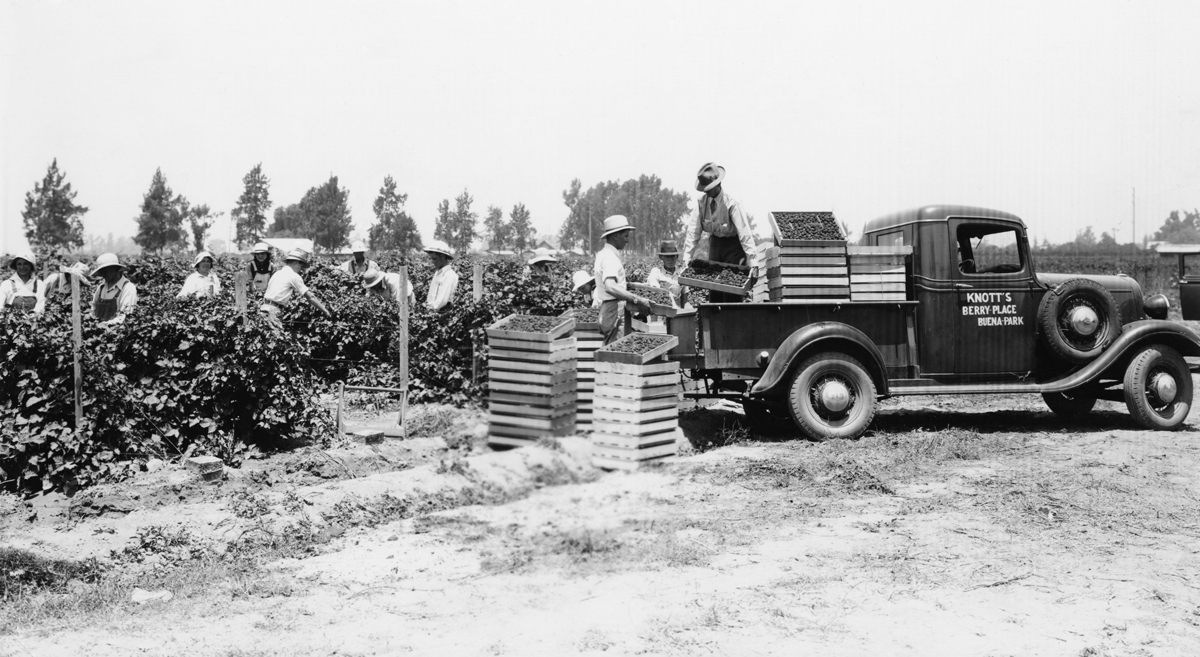
1930s
RUDOLPH BOYSEN INVENTS THE BOYSENBERRY, WALTER KNOTT MAKES IT FAMOUS
What do you get when a blackberry, a red raspberry and a loganberry have a threeway? For Rudolph “Rudy” Boysen, an Anaheim Parks Superintendent and farmer, you get some dead plants and a small park in Anaheim named after you. For Walter Knott, patriarch of the Buena Park farming family and founder of Knott’s Berry Farm, you get an empire.
Boysen began experimenting with a new strain of berry that crossed the loganberry (the lovechild of a raspberry and blackberry), red raspberry and blackberry. However, the mutant berries kept dying on the vine on his Anaheim farm. Knott took the scraggly plants Boysen had all but discarded and nurtured them back to health at his own farm in Buena Park. By 1932, Knott had made a viable crop of the mutant berries and began selling them along Beach Boulevard at Knott’s Berry Place in 1934. Boysenberry fever was born, and folks began traveling from around Southern California to get a taste of the sweet dark berries. Which led to . . .
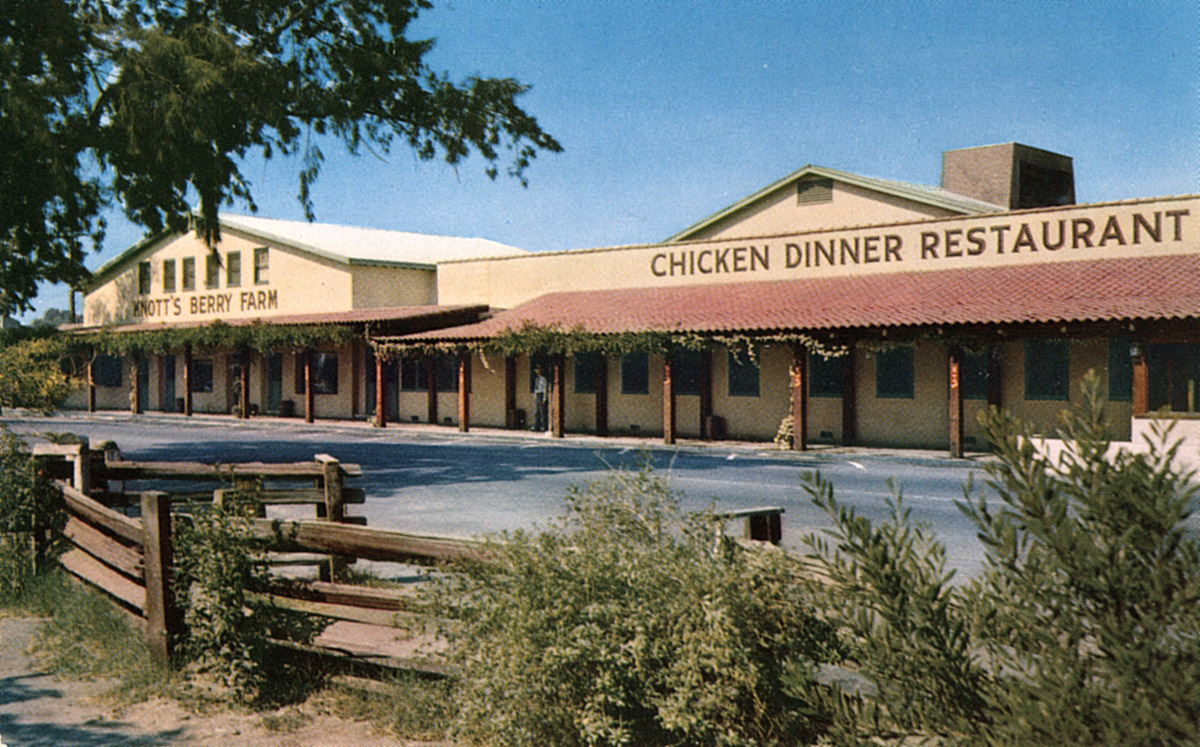
June 1934
CORDELIA KNOTT’S FRIED CHICKEN FEVER
In the early days of boysenberry fever, Cordelia Knott, ever the dutiful host, had what would later prove to be the inspired idea to cook up some of her soon-to-be-legendary fried chicken and sell the dish with all the fixin’s for 65 cents a pop to make ends meet during the Great Depression. She served the first eight dinners on her wedding china. The public had gotten a taste for Mrs. Knott’s chicken, sparking a frenzy for fried food in a rural Americana setting unrivaled until the deep-fried Twinkie hit the county-fair scene on the other side of the century.
In an attempt to entertain the thousands of restaurant customers lining up for several hours each day, Walter Knott relocated the Gold Trails Hotel (originally built in Prescott, Arizona, in 1868) to his Buena Park Farm in 1940 to help entertain them. This would be the beginnings of the Ghost Town that would be gradually built up over the years with other oddities and entertainment until it became America’s first full-fledged theme park, Knott’s Berry Farm. The Knott family would ditch farming nearly altogether by the late 1950s to focus solely on the amusement park industry it created on Beach Boulevard. This would pave the way for a different Walter and his mouse to follow suit in Anaheim in 1955.

August 1954
DISNEYLAND HOSTS ITS GROUNDBREAKING CEREMONY
A man named Buzz was on a mission in 1953. He searched, not quite “to infinity and beyond,” but to find the perfect land on which to build something the likes of which the world had never seen before. Hired by a Burbank animation studio, Buzz Price scoured countless studies: analyzing trends of population, traffic and weather. After three months of research, all signs finally pointed to Anaheim. The post-World War II population boom paired with the recent southern extension of the 5 freeway, plus the agreeable weather that made the area attractive to farmers, pointed to Orange County as Price’s pick for the future location of Walt Disney’s dream.
Price found 160 acres of citrus groves with 4,000 orange trees and 15 homes in what was labeled the “Ball Road Subdivision” on the map he used to scout the area. “Walt heard about an orange grove in Anaheim for sale,” explained Steve Martin, the world-famous entertainer and OC boy, in a commemorative documentary of Disneyland, “an hour away from any major city at the end of a dirt road.” Martin got his start selling guidebooks and performing magic tricks at Disneyland’s Magic Shop on Main Street, USA, before entertaining crowds at Knott’s Berry Farm’s Bird Cage Theatre. (He performs at the OC Fair on July 20.)
The documentary, made by the Walt Disney Co. to commemorate the 50th anniversary of the park, shows footage of Walt freeing his inner farmer, decked out in Western ranch wear and pacing the orange groves that would later be bulldozed to make way for Disneyland. It’s said Disney wanted to save several of the original trees from the grove and incorporate them into the park. He even went so far as to mark off which trees to keep and which to clear. “Red ribbons for the trees he wanted to save for Disneyland and green ribbons for the ones he wanted removed,” Martin explained. “But as fate would have it, the bulldozer driver was colorblind. Oops!”
Early aerial photos of the theme park show the area surrounded by groves and fields. But Disneyland fever took off after opening day, and each of those pieces of farmland was sold off to make way for hotels, motels, convention centers and, of course, parking lots.
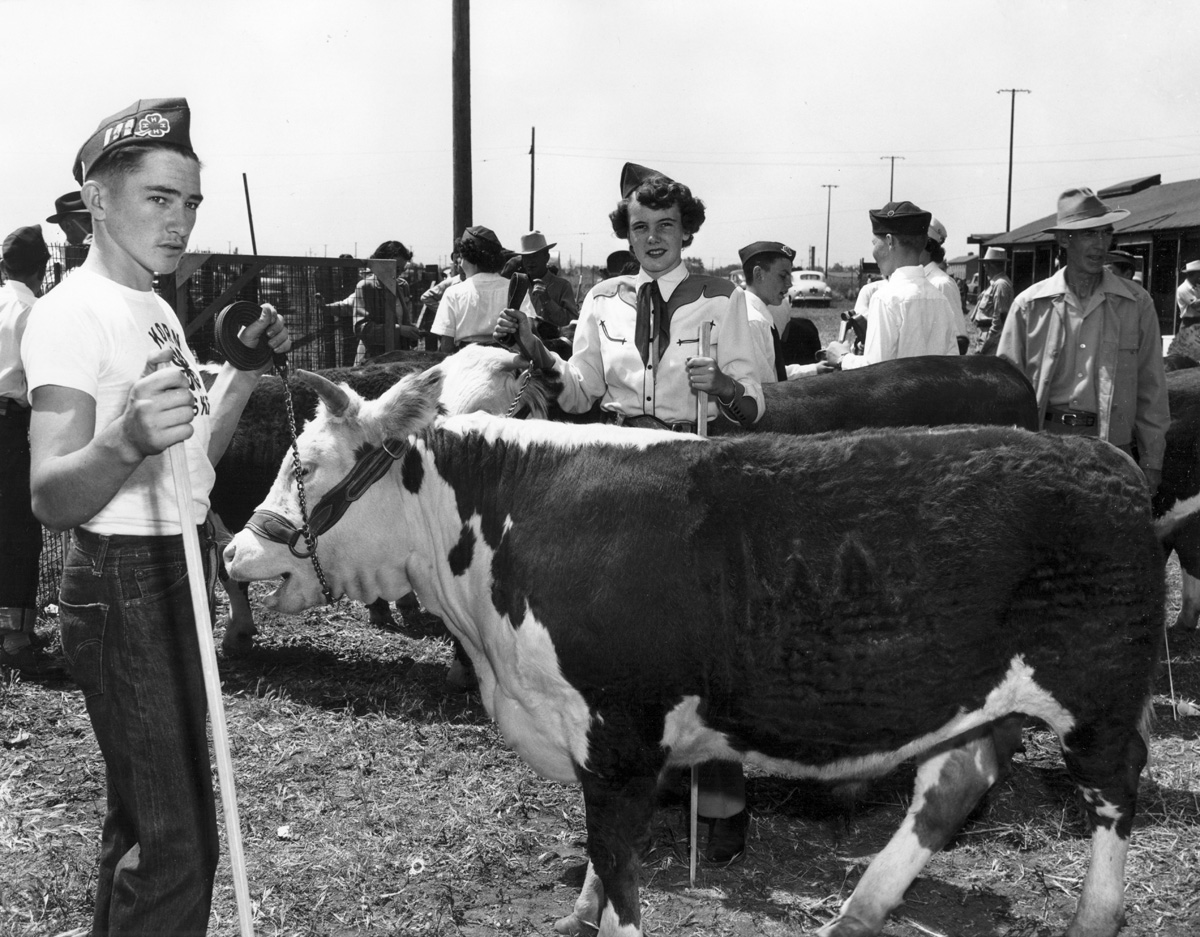
This was the catalyst in Orange County’s major shift from small rural farm town to master-planned community. The day that colorblind bulldozer driver tore through those orange groves was the day our county began tearing down what was actually built by our pioneer farming families en masse. We became content with synthetic, citrus-scented spritzes in front of television screens. We began clearing cattle for commerce and leveling lima bean fields for opulent, air-conditioned shopping palaces and world-class theatrical performances.
For one month out of the year, we’re called back to our county’s farming heritage via the OC Fair, where we can not only play farmer for a day in Costa Mesa’s summertime sun, but also still enjoy watching episodes of Westworld on our television screens from the comforts of our couch in our air-conditioned homes, sipping beer someone else took the time to brew and eating burgers from a cow someone else slaughtered by nightfall.
“Free Your Inner Farmer” at the Orange County Fair at the OC Fairgrounds, 88 Fair Dr., Costa Mesa; www.ocfair.com. Opens July 13. Check website for hours, ticket prices and special promotions. Through Aug. 12.
When not running the OCWeekly.com and OC Weekly’s social media sites, Taylor “Hellcat” Hamby can be found partying like it’s 1899.


I recently tried CBD gummies from this website https://www.cornbreadhemp.com/products/full-spectrum-cbd-gummies as a replacement for the blue ribbon time and was pleasantly surprised past the results. Initially skeptical, I create that it significantly helped with my desire and be in the land of nod issues without any unconcealed side effects. The lubricator was unoppressive to put to use, with clear dosage instructions. It had a mild, shameless grain that was not unpleasant. Within a week, I noticed a marked upgrading in my blanket well-being, feeling more languorous and rested. I cognizant the natural approach to wellness CBD offers and aim to continue using it.